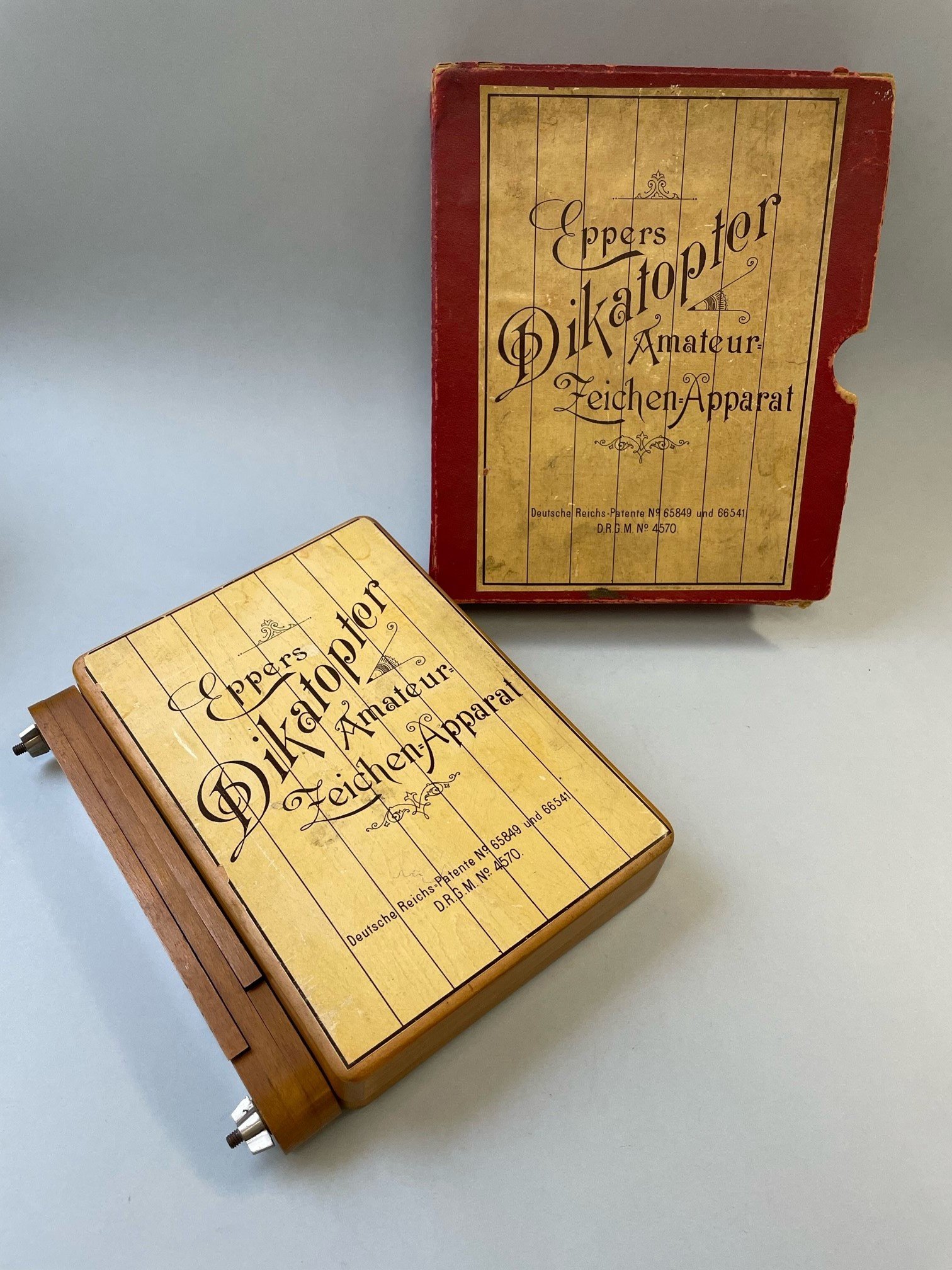Das Gerät, erfunden von Heinrich Epper, ist ein Zeichenapparat. Das Gerät projizierte z. B. Landschaften oder Gegenstände mithilfe eines Spiegels auf eine Zeichenfläche. In einem Artikel der Zeitschrift "Deutscher Hausschatz" aus dem Jahr 1895 heißt es: "Dem heranwachsendem Kinde dürfte es [das Dikatopter] durch seine immer wieder neue und anregende Unterhaltung bald ein beliebtes Spielzeug werden, das überdies noch den Vorteil besitzt, den Kindern Fertigkeit im richtigen Sehen zu ermitteln."
Auf der Verpackung sind die Deutsche Reichspatentnummern 65849 und 66541 vermerkt.
Die beiliegende Rechnung belegt, dass das Dikatopter direkt aus der Fabrik G. J. Pabst (Inhaber: Emil Thürnauer) in Nürnberg stammt.
en

